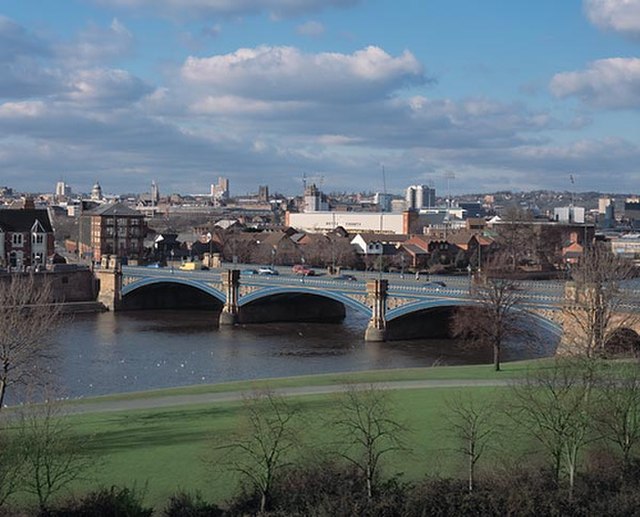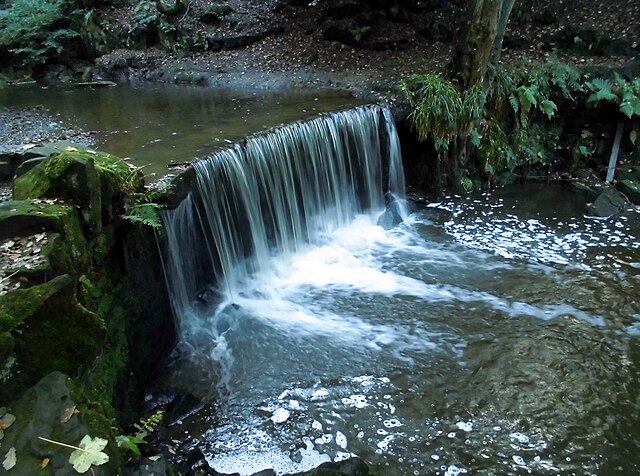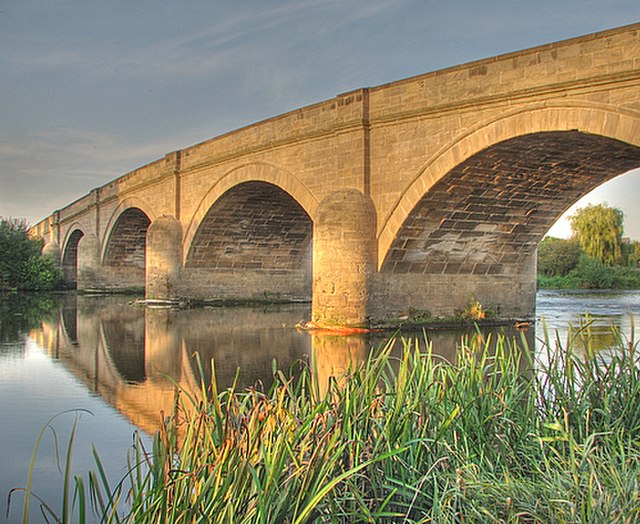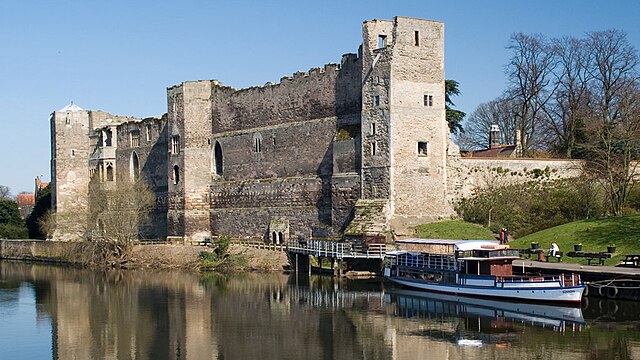The Foss Dyke, or Fossdyke, connects the River Trent at Torksey to Lincoln, the county town of Lincolnshire, and may be the oldest canal in England that is still in use. It is usually thought to have been built around AD 120 by the Romans, but there is no consensus among authors. It was refurbished in 1121, during the reign of King Henry I, and responsibility for its maintenance was transferred to the city of Lincoln by King James I. Improvements made in 1671 included a navigable sluice or lock at Torksey, and warehousing and wharves were built at Brayford Pool in the centre of Lincoln.
Brayford Pool in Lincoln, where the Foss Dyke meets the River Witham
Torksey Lock, looking towards the River Trent. Four sets of gates are visible, and a further two sets are situated beyond the bridge.
The Trent is the third longest river in the United Kingdom. Its source is in Staffordshire, on the southern edge of Biddulph Moor. It flows through and drains the North Midlands into the Humber Estuary. The river is known for dramatic flooding after storms and spring snowmelt, which in the past often caused the river to change course.
Trent Bridge, with Nottingham in the background
The Trent passes over a man-made waterfall in Hollin Wood just downstream from its source.
Swarkestone Bridge
Newark Castle, Nottinghamshire






